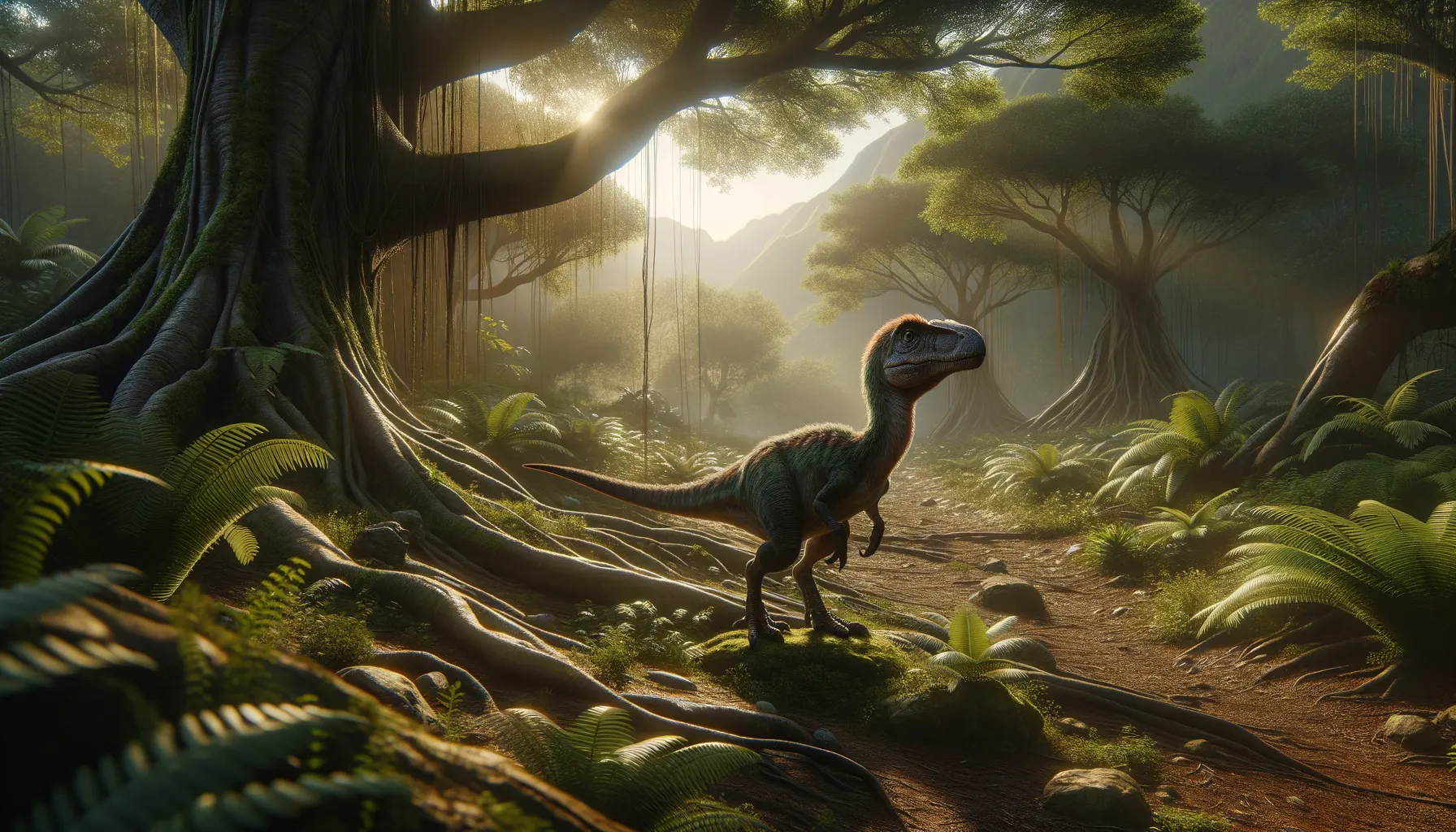
Changchunsaurus
The agile herbivore of ancient China!
Period
Cretaceous
Length
Measured approximately 2 meters in length.
Height
Stood about 1 meter tall at the hips.
Weight
Weighed between 40 to 50 kilograms.
Changchunsaurus was a small, herbivorous dinosaur that roamed the Earth during the Cretaceous period. Its fossils were first discovered in the Jilin Province of China, and it is known for its birdlike beak and agile body structure. As part of the ornithopod family, Changchunsaurus thrived in a plant-rich environment and exhibited traits that suggest a mix of mobility and stability, crucial for evading predators.
Diet
Changchunsaurus primarily fed on a variety of plants. Its beak-like mouth was well-suited for clipping leaves and stems. Given its size, it likely focused on low-lying vegetation.
Hunting
Being herbivorous, Changchunsaurus did not exhibit hunting behavior. It likely foraged in groups to better locate and consume nutritious plant matter.
Environmental challenges
Changchunsaurus faced challenges from climate fluctuations during the Cretaceous period, which affected the availability of plant resources. Predator presence, such as larger theropods, required it to develop efficient methods of evasion and hiding. Additionally, competition for food with other herbivores necessitated constant adaptation and resourcefulness.
Speed
Moderately slow runner, adapted for short distances.
Lifespan
Estimated to live for around 10 to 20 years.
First discovery
Discovered in northeast China in 2005.
Fun Facts
- Changchunsaurus was a small dinosaur, roughly the size of a large cat, making it quite manageable in the prehistoric world.
- It lived during the Early Cretaceous period, around 125 million years ago, a time when Earth was very different from today.
- Fossils of Changchunsaurus were first discovered in northeastern China, an area rich in dinosaur history.
- Despite its small size, Changchunsaurus was an herbivore, munching on plants and leaves with its beak-like mouth.
- This dinosaur's name means 'Changchun lizard,' celebrating the city near where its fossils were found.
- Changchunsaurus had bipedal locomotion, meaning it could walk on two legs, which was quite common among dinosaurs of its type.
- Some scientists believe that Changchunsaurus might have lived in herds for protection and social interaction.
Growth and Development
Changchunsaurus experienced relatively rapid growth, reaching maturity in just a few years. Fossil evidence suggests incremental growth patterns common to many small ornithopods, relying heavily on abundant vegetation for sustenance during its development stages. Juvenile Changchunsaurus would have needed to stay close to adults for protection.
Habitat
This dinosaur inhabited the lush plains and forests of what is now China. The environment offered a variety of plant life, crucial for its diet. Rivers and lakes in this region provided essential water supply and supported a rich ecosystem.
Interaction with other species
Changchunsaurus likely coexisted with other herbivorous species, sharing grazing lands and competing for similar plant resources. It engaged in social behaviors typical of herd animals, possibly forming groups to deter predators. Its interactions with predators involved evasion rather than confrontation.
Natural lifespan
In the wild, it had a natural lifespan of around 15 years.
Reproduction
Reproduction in Changchunsaurus was likely similar to other ornithopods, involving the laying of eggs in nests. It exhibited some form of parental care, with adults likely guarding the nests from predators. Hatchlings were precocial, meaning they were relatively mature and mobile shortly after hatching.
Social behaviour
Changchunsaurus exhibited gregarious behavior, often moving in herds. This social structure provided protection against predators and facilitated foraging. Within the herd, there may have been social hierarchies similar to those seen in modern herd animals.
Fossil locations
Fossils of Changchunsaurus have primarily been found in the Jilin Province of China. These discoveries include skeletal remains that have provided insight into its anatomy and lifestyle. The sedimentary layers where its fossils are found indicate a once-verdant landscape filled with diverse plant life.
